What is Shiozake (Japanese Salted Breakfast Salmon)?
Shiozake (塩鮭) is a simple dish of salted and grilled salmon. The name of the dish is derived from the Japanese words shio (塩) meaning salt, and sake or jake (鮭), meaning salmon.
Salted salmon is commonly grilled, but many people these days prefer to pan-fry it. This dish is a popular breakfast food in Japan and is often featured in Japanese TV shows, anime, and manga.
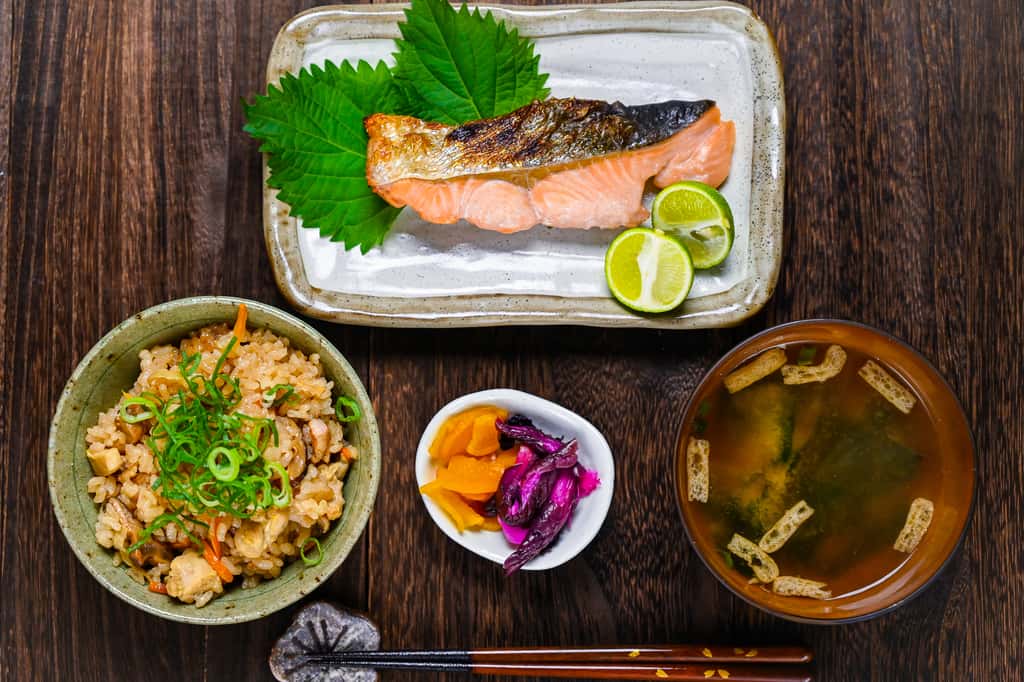
Whenever we think of a traditional breakfast, most Japanese people would probably say:
- A bowl of freshly cooked rice
- A bowl of miso soup
- Nori seaweed
- Some pickles
- Salted salmon
Of course, not many people have all of these for breakfast these days, but I believe my grandmother, who’s in her 80s, still regularly has this type of breakfast.
If you have a chance to stay in a traditional Japanese hotel (ryokan), I’m sure you will see all of these things as breakfast (and it’s usually HUGE!). I’m always surprised by how big the breakfast they offer!
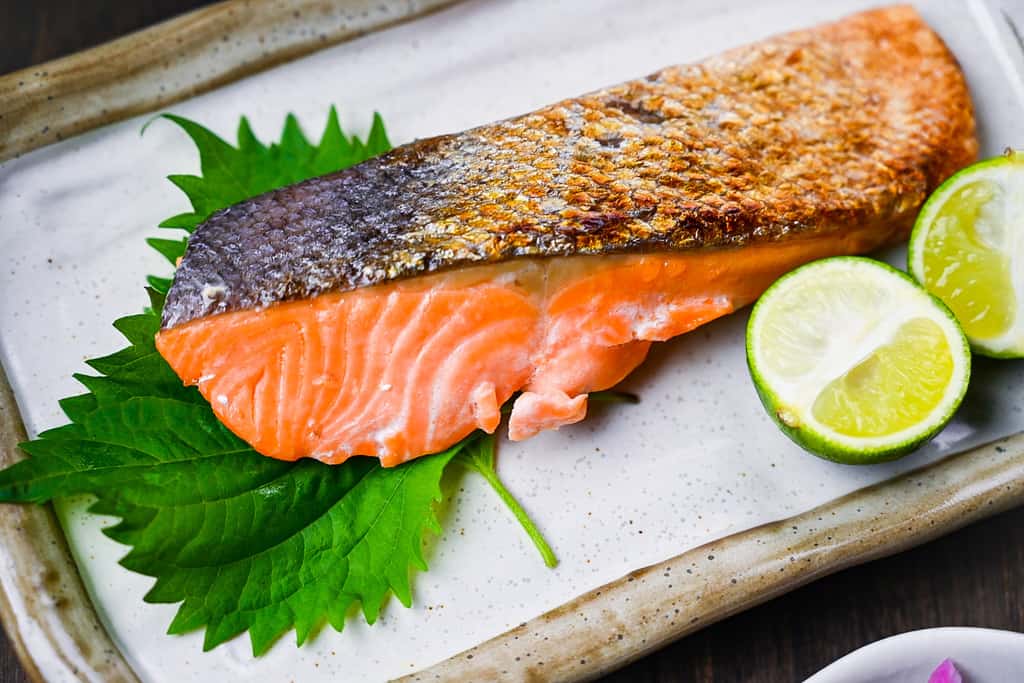
How to Pick Salmon
For the best taste and flavor, it is important to choose good quality salmon. This dish is only seasoned with salt, so pay attention to the following tips when selecting your salmon:
- Look for vibrant colors (bright pink, not too dull)
- Choose salmon with thick flesh
- Select salmon with the least amount of drips
For people who live in Japan, the best season for salmon is from autumn to winter, when the salmon migrate up the river.
Although salmon can be enjoyed in the spring and summer months due to farming and preservation technology, the best salmon is available during the colder months. This could be different depending on where you live though.
If you want to use frozen salmon, you should always defrost the salmon fillets before cooking. If you try to cook them while frozen, they might end up burnt on the outside and raw in the middle. I recommend defrosting the salmon in the fridge overnight to achieve the best texture and flavor.
It’s also important to wipe off any moisture that accumulates during defrosting.
This type of moisture can cause a fishy smell, so wipe it off thoroughly with kitchen paper before cooking.
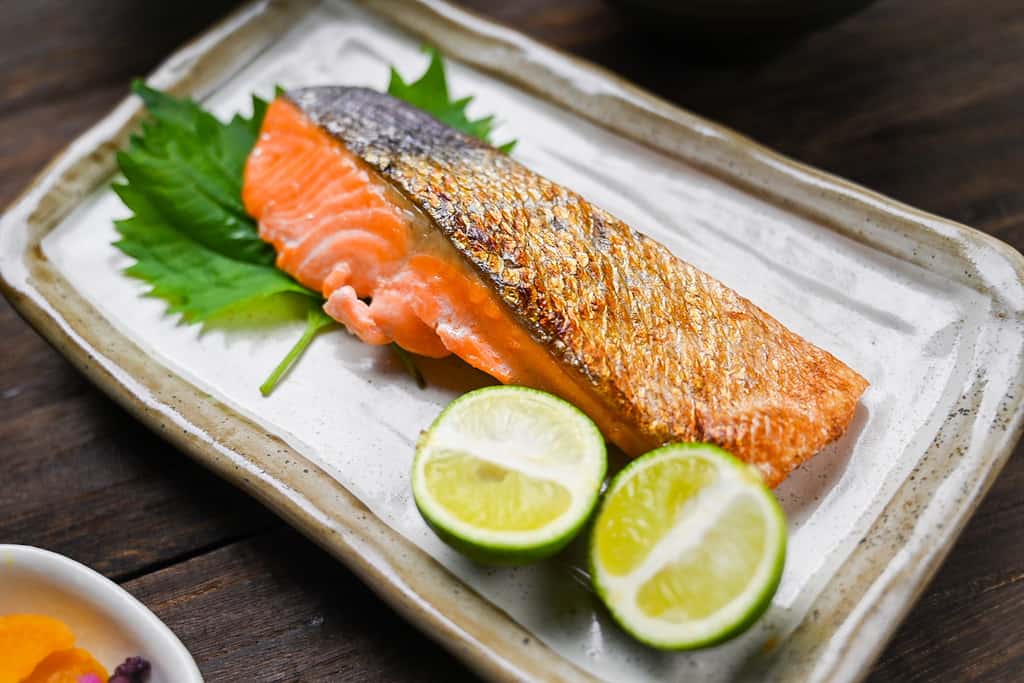
Visual Walkthrough & Tips
Here are my step-by-step instructions for how to make Japanese Grilled Salmon at home. For ingredient quantities and simplified instructions, scroll down for the Printable Recipe Card below.
If you prefer to watch the process in action, check out my YouTube video of this recipe for a complete visual walkthrough!
For this recipe, you will need the following ingredients:
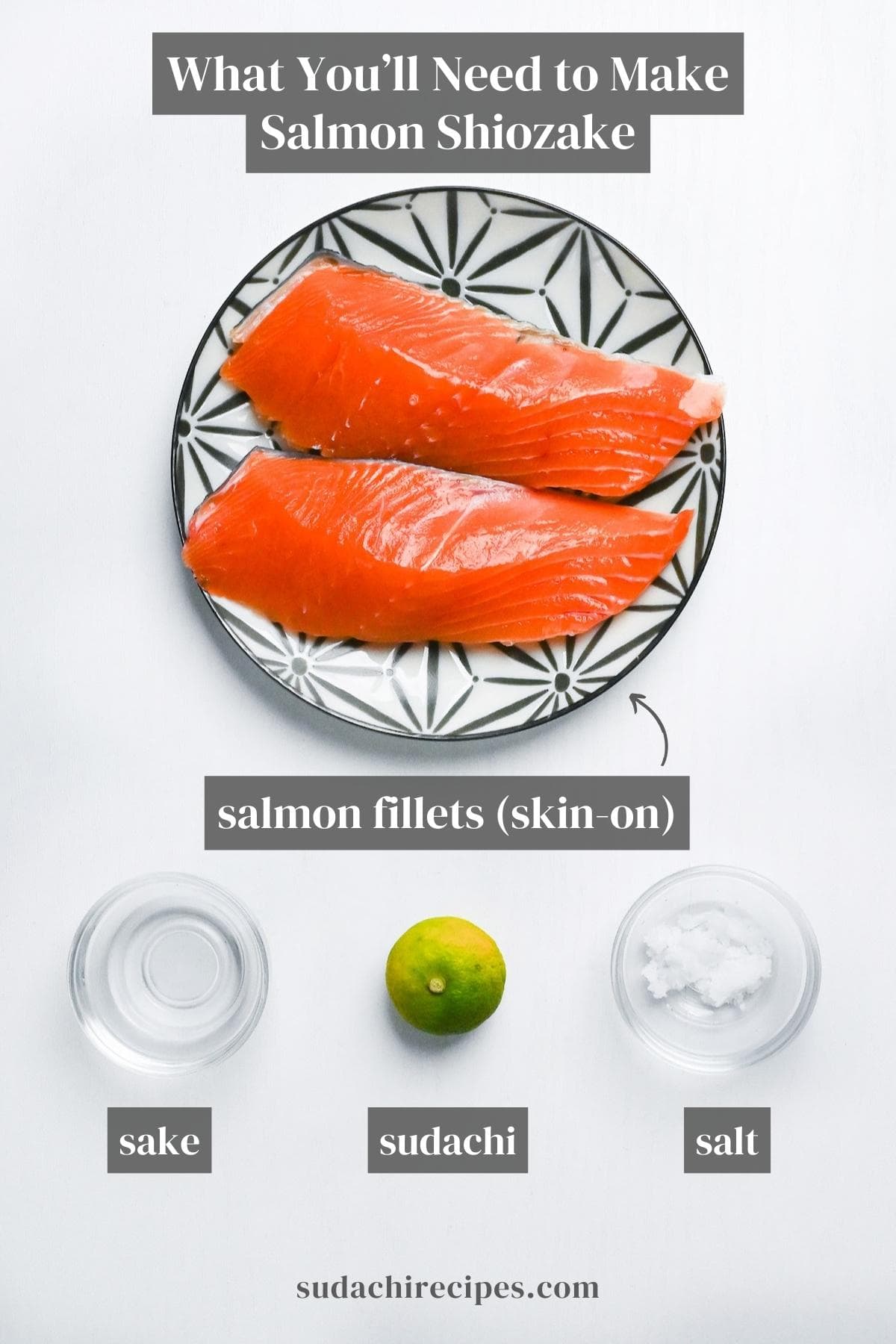
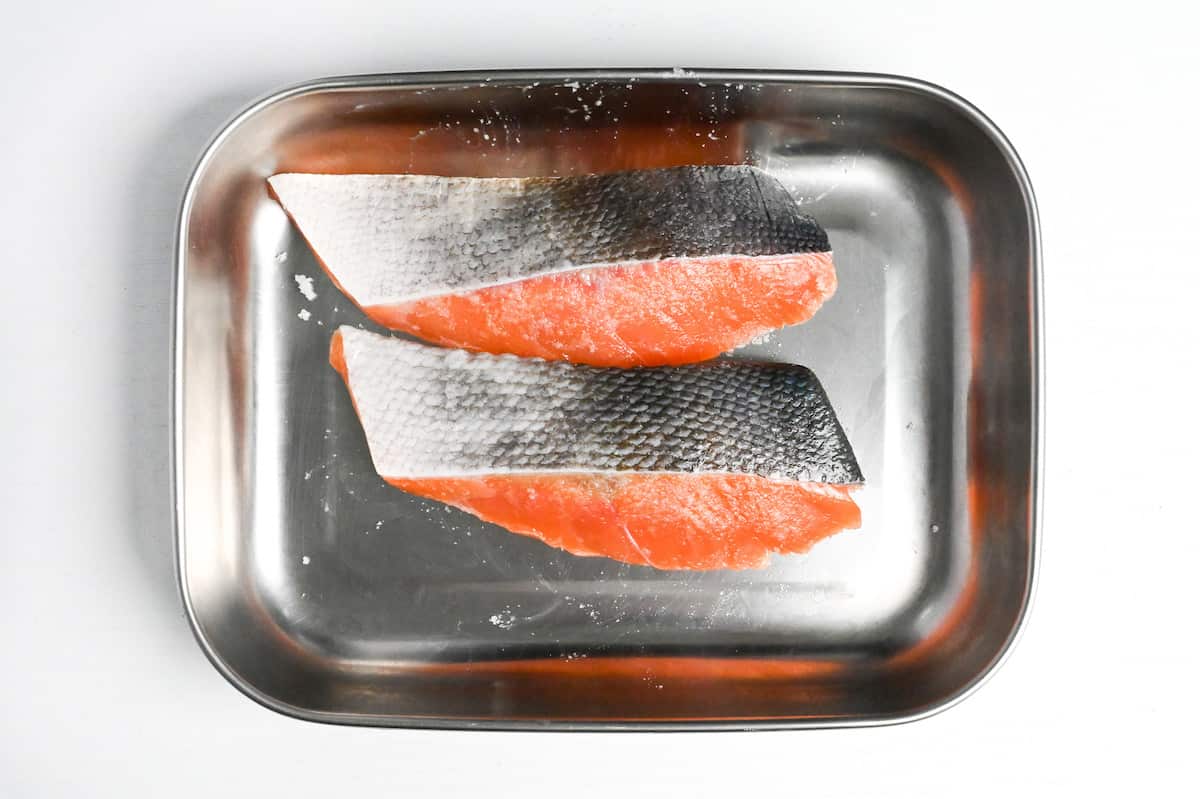
Start by laying out your salmon fillets. Sprinkle them with 1-2% of the salmon’s weight of sea salt on both sides.
Gently rub the salt over the salmon, ensuring even seasoning. For the best flavor, let the salmon marinate in the fridge for at least 3 hours, preferably overnight.
This will allow the salt to penetrate deeply into the salmon, resulting in a more flavorful dish.
If you want to prepare authentic Japanese-style salted salmon, then it is important to use the right amount of salt. The ideal amount of salt should be around 2% of the salmon’s weight.
However, it is worth noting that this salt level is for salmon served with a big bowl of plain rice, which is how Japanese people traditionally enjoy it.
If you don’t want your salmon to be too salty or don’t plan on serving it with plain rice, you might want to use less salt, around 1% or 1.5% of the salmon’s weight.
To give you an idea of the amount of salt required, for 200g of salmon fillets, 1% salt would be 2g, 1.5% would be 3g, and 2% would be 4g. It is also worth noting that 3g of salt is approximately half a teaspoon.
Once your salmon has marinated, take it out of the fridge. Pat it dry with kitchen paper to remove any excess moisture.
If you refrigerate salmon fillets overnight, the salt draws out the moisture. This moisture sitting on the surface of the fish or in the container might develop a fishy smell. To reduce unwanted odors, dry the salmon with paper towels before cooking.
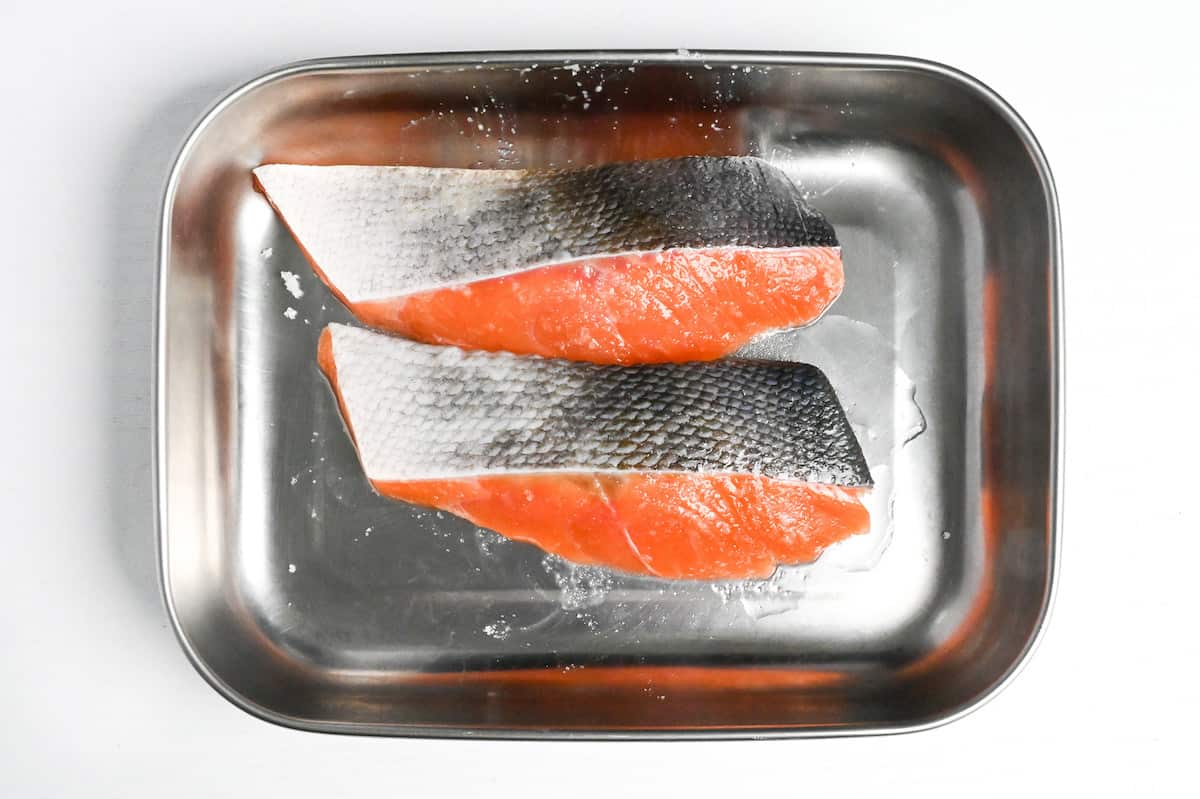
Then rub 1 tsp of sake over the salmon.
In Japan, a common tip when grilling salmon is to add sake. It’s kind of funny because, in Japanese, salmon is also called sake (鮭).
Adding sake to salmon enhances its flavor, adds umami, softens the fishy smell, and improves its texture, making it more fluffy and tender.
If you can’t find sake, it’s okay to skip it. This technique is used to level up the salmon, but you can still make delicious Shiozake without it.
Preheat your oven grill or broiler to a medium-high setting. Gas grills usually warm up in about 5 minutes, but electric ones might take longer.
Properly preheating the grill is essential for achieving perfectly grilled fish.
This simple tip not only prevents the fillets from sticking to the grill but also creates beautiful grill marks on the surface of the fish.
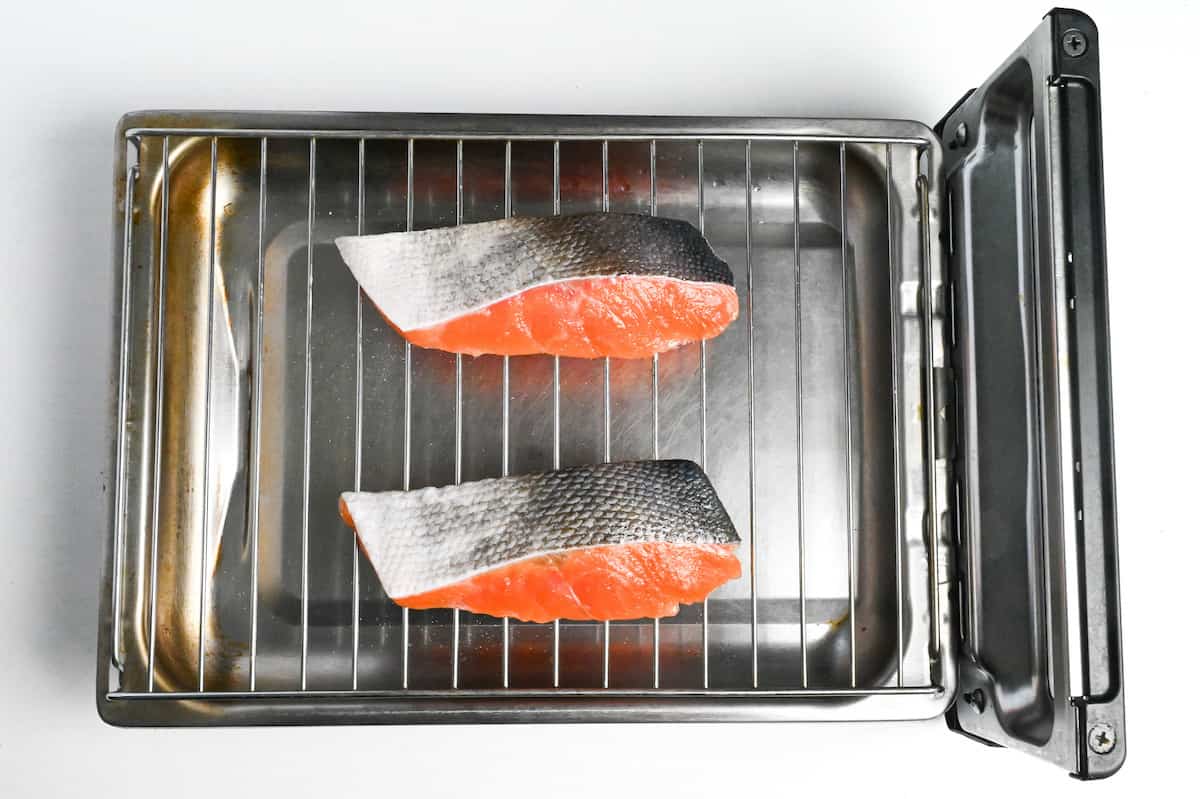
Place the salmon under the grill, skin side up. Be mindful of the grill’s heat distribution and position the salmon directly underneath the heat source for even cooking.
You can use aluminum foil to prevent fish juice from leaking into the grill when grilling salmon. To do this, I place the salmon on top of a piece of foil and fold the edges of the foil up to create walls.
For perfectly cooked salmon, cooking for 3-4 minutes on the skin side and then 4-5 minutes on the other side is recommended. However, the exact cooking time may vary depending on the size and thickness of the fillets.
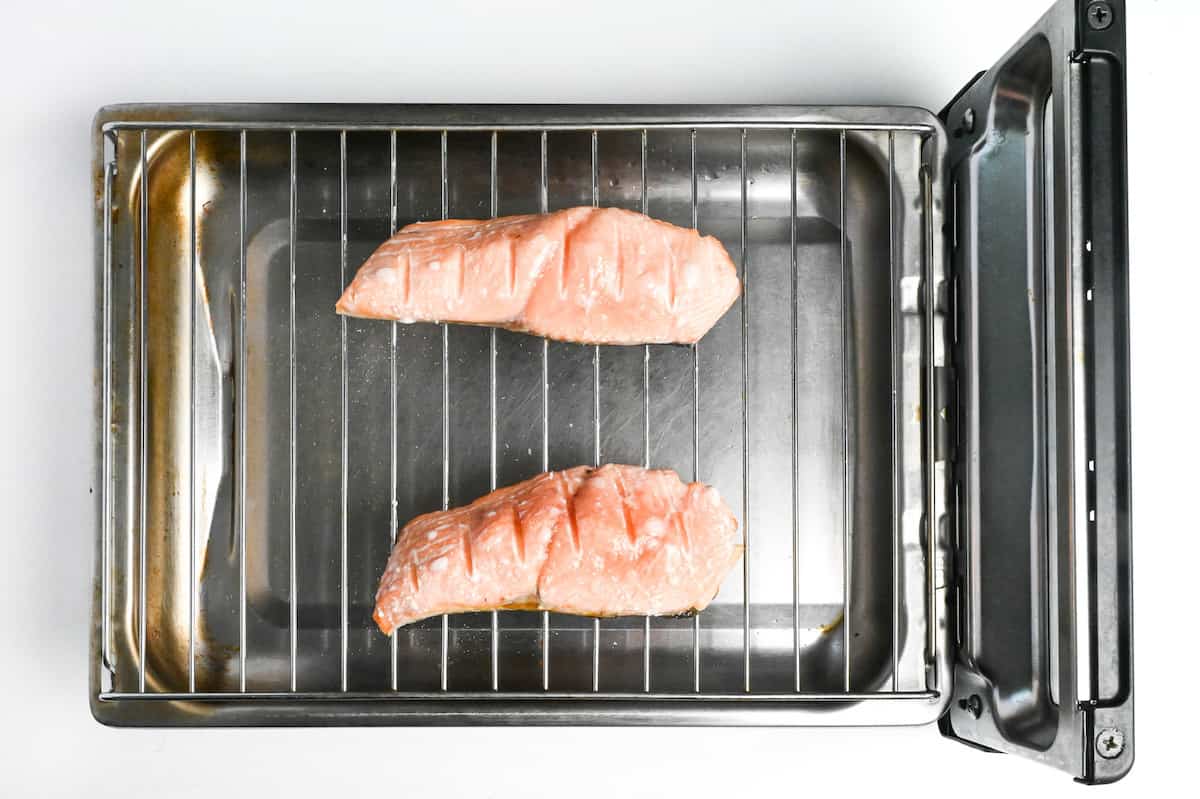
The key is to cook the skin side on medium heat until it becomes crispy, ensuring it doesn’t burn. After that, flip the fillet and grill the other side until it’s fully cooked.
If the meat side is still pink, reduce the heat to medium-low or low and check the salmon’s doneness. You’ll know it’s ready when the color turns paler pink.
Perfect salted salmon should be crispy on the skin, cooked through, fluffy, juicy, and not dry.
Jump to Full Recipe Measurements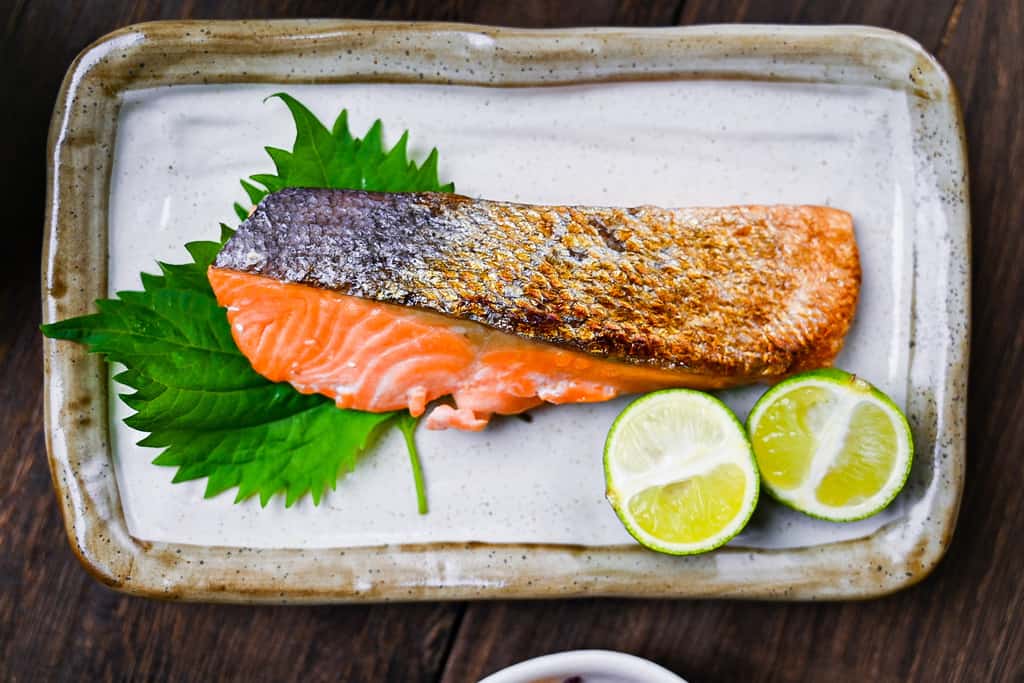
Using a Frying Pan
Even though Shiozake is usually grilled, and the recipe here shows today uses a grill, some people prefer using a frying pan for this dish. I only recommend this if you don’t have a grill.
To give you more options, I will quickly go through how to cook this dish with a frying pan.
We never use oil for cooking Shiozake, so to avoid burning the salmon fillets and prevent them from sticking to the bottom of the pan, using baking paper is recommended.
First, line the frying pan with a sheet of baking paper and then place the salted salmon fillet on top of it, skin side facing down, and cook over medium heat.
Not only is it easy to cook the salmon, but it is also much easier to wash the pan after cooking.
With a medium heat, fry the skin side for 3 minutes.
It is important to cook with medium heat here because if you use low heat, you end up cooking for too long, and the umami will escape.
On the other hand, if you cook them with high heat, the surface will burn, but the inside is still raw.
After 3 minutes, gently turn the salmon over and sprinkle with a tablespoon of sake or water, then reduce the heat to low and cover with a lid.
Sake adds umami, makes the fish more tender, and helps soften the fishy taste and smell, but the primary purpose is steaming here, so it’s perfectly fine to use water instead.
Allow the salmon to steam on low for 3 to 5 minutes (depending on the thickness), then remove the lid and turn up the heat so that the excessive moisture will evaporate.
Then, turn the fillets over again to remove the moisture from the other side.
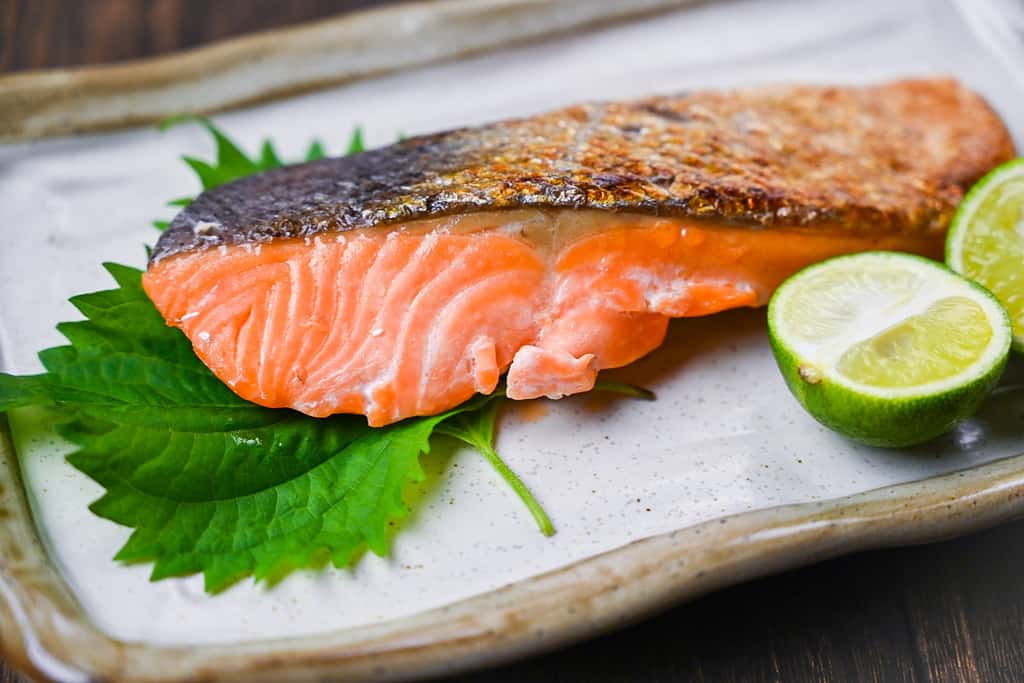
How to Store
To preserve shiozake’s freshness, refrigerate or freeze it. Before refrigerating, let it cool, then wrap and store it; consume within two days.
For longer storage, freeze the cooled salmon wrapped tightly in plastic. Frozen salmon lasts about a month but shouldn’t be refrozen after thawing.
Thaw in the fridge for the best flavor and texture.
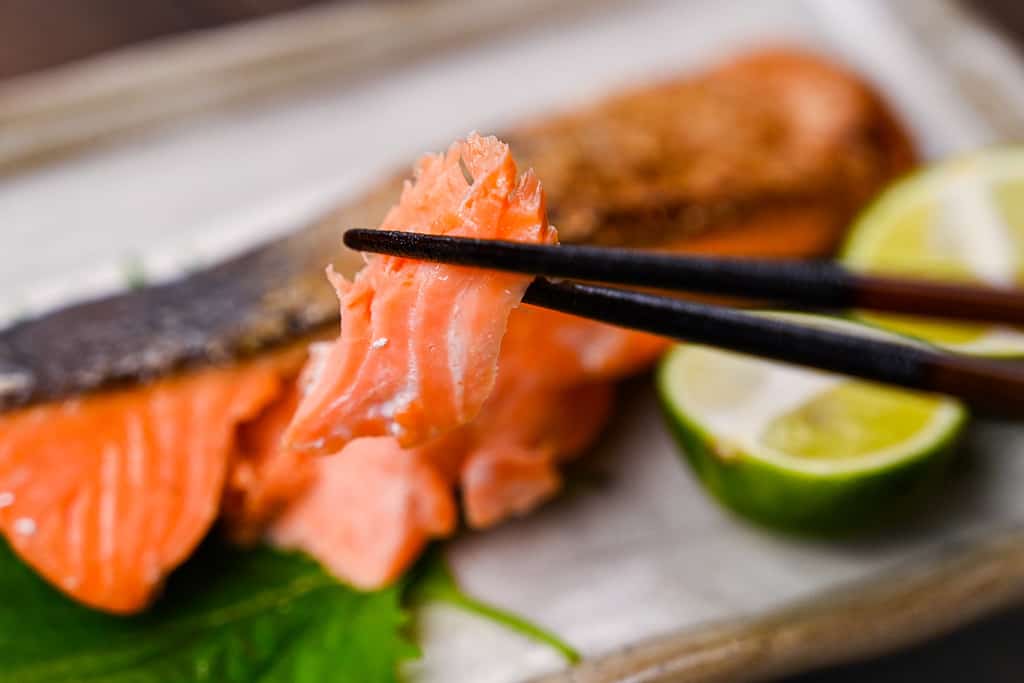
I hope you enjoy this Shiozake recipe! If you try it out, I’d really appreciate it if you could spare a moment to let me know what you thought by giving a review and star rating in the comments below. It’s also helpful to share any adjustments you made to the recipe with our other readers. Thank you!
More Japanese Salmon Recipes
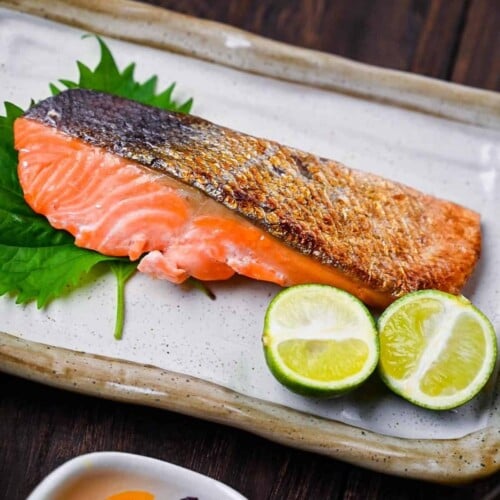
Shiozake (Japanese Salted Breakfast Salmon)
Ingredients
- 200 g salmon fillets
- 2-4 g salt 1-2% of salmon weight
- 1 tsp sake optional
- 1 sudachi or other citrus – optional
My recommended brands of ingredients and seasonings can be found in my Japanese pantry guide.
Can’t find certain Japanese ingredients? See my substitution guide here.
Instructions
- First, sprinkle 200 g salmon fillets with 2-4 g salt spread over both sides. Use your hands to rub the salt over the surface, making sure it's evenly seasoned. Store in the fridge for at least 3 hours, preferably overnight for the best flavor.

- Preheat your oven grill or broiler on a medium-high setting. (Gas takes about 5 minutes, electric takes a little longer.)Remove the salmon from the fridge and dry the surface with kitchen paper to remove any excess moisture. Rub 1 tsp sake over the salmon to improve the texture and taste (optional).

- Place the salmon under the grill with the skin side facing up. Be aware of the shape of the grill's heat source and place the salmon directly underneath to ensure even cooking. Cook for 3-4 minutes or until the skin becomes golden and crispy.

- Carefully flip the salmon over, lower the heat to medium and cook on the other side for 4-5 minutes or until cooked through.

- Transfer to a plate and serve with rice and miso soup. Squeeze the juice of 1 sudachi over the salmon and enjoy!

- Enjoy!






We felt it was a little simple and lacked some flavor. But it was a nice light way to have some protein!
Hi Grace,
Thank you for your comment and feedback!
Unfortunately, the dish is intended to be simple and only seasoned with salt for breakfast in Japan.
If you want more flavor while keeping the salmon light, you can try this Salmon Flake recipe (https://sudachirecipes.com/salmon-flakes/). It uses a bit of mirin, soy sauce, and butter!
Yuto
Funny!
You read my mind! I was just looking for a shiozake recipe.. will try to make it this week.. thanks
I’m glad that I posted at the right time! I hope you will enjoy! 🙂
Perfect!
Thank you, Jonas!